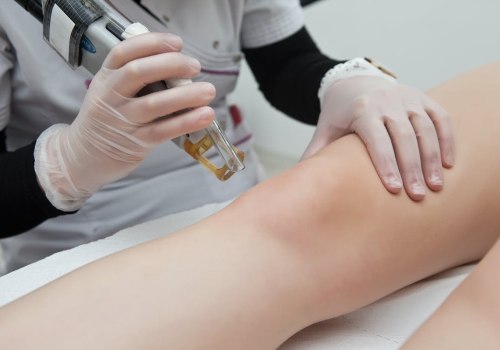Are you considering laser hair removal treatments and wondering how many treatments you will need to achieve the results you're looking for? The answer will depend on a number of factors, including your skin type, the area being treated, and the type of laser used. Understanding the number of treatments necessary for results is key to making an informed decision about your laser hair removal session. In this article, we'll provide an overview of the factors that contribute to the length of a laser hair removal session, as well as the number of treatments needed to achieve desired results. We'll also explore the importance of seeking out a qualified professional for your treatment and what to expect during and after your session. The length of a laser hair removal session will vary depending on the size of the area being treated. Generally, a small area such as the upper lip can be completed in just a few minutes, while a larger area such as the back or legs may take up to an hour.
The number of treatments needed for results can also vary depending on the type of hair and skin being treated. It is important to note that some people may require more treatments than others in order to achieve the desired results. Most practitioners recommend a series of 6-8 treatments spaced 4-6 weeks apart in order to achieve optimal results. However, some people may require fewer or more treatments depending on their individual needs.
It is also important to note that results may not be immediately visible after the first treatment and that multiple treatments are typically needed before any noticeable changes occur. In addition, it is important to understand that laser hair removal is not a permanent solution and that additional treatments may be necessary in order to maintain results. Regular maintenance sessions are typically recommended in order to keep unwanted hair growth at bay. Finally, it is important to remember that laser hair removal is not suitable for everyone and that it should always be performed by a qualified practitioner in order to ensure safety and optimal results.
Factors Affecting the Number of Treatments Needed
There are several factors that can affect the number of treatments needed for results, including skin type, hair type, hormones, and genetics.Those with darker skin tones typically require more treatments than those with lighter skin tones due to the fact that darker skin absorbs more laser energy. Similarly, those with coarser and darker hair will generally require more treatments than those with finer and lighter hair. Hormonal changes can also affect the number of treatments needed, as hormones can affect the texture and thickness of hair growth. Finally, genetics can also play a role in the number of treatments needed for results. Laser hair removal is an effective way to reduce unwanted hair growth and can be tailored to each individual's needs.
Factors such as skin type, hair type, hormones, and genetics may all play a role in how many treatments are needed for results. While one treatment may provide some improvement, multiple treatments may be necessary for the best outcome. Additionally, maintenance sessions may be needed in order to maintain the desired results. It is important to speak with a trained professional to discuss your specific needs and develop a treatment plan that is tailored to you. With the right number of treatments and proper aftercare, laser hair removal can provide long-lasting results.







